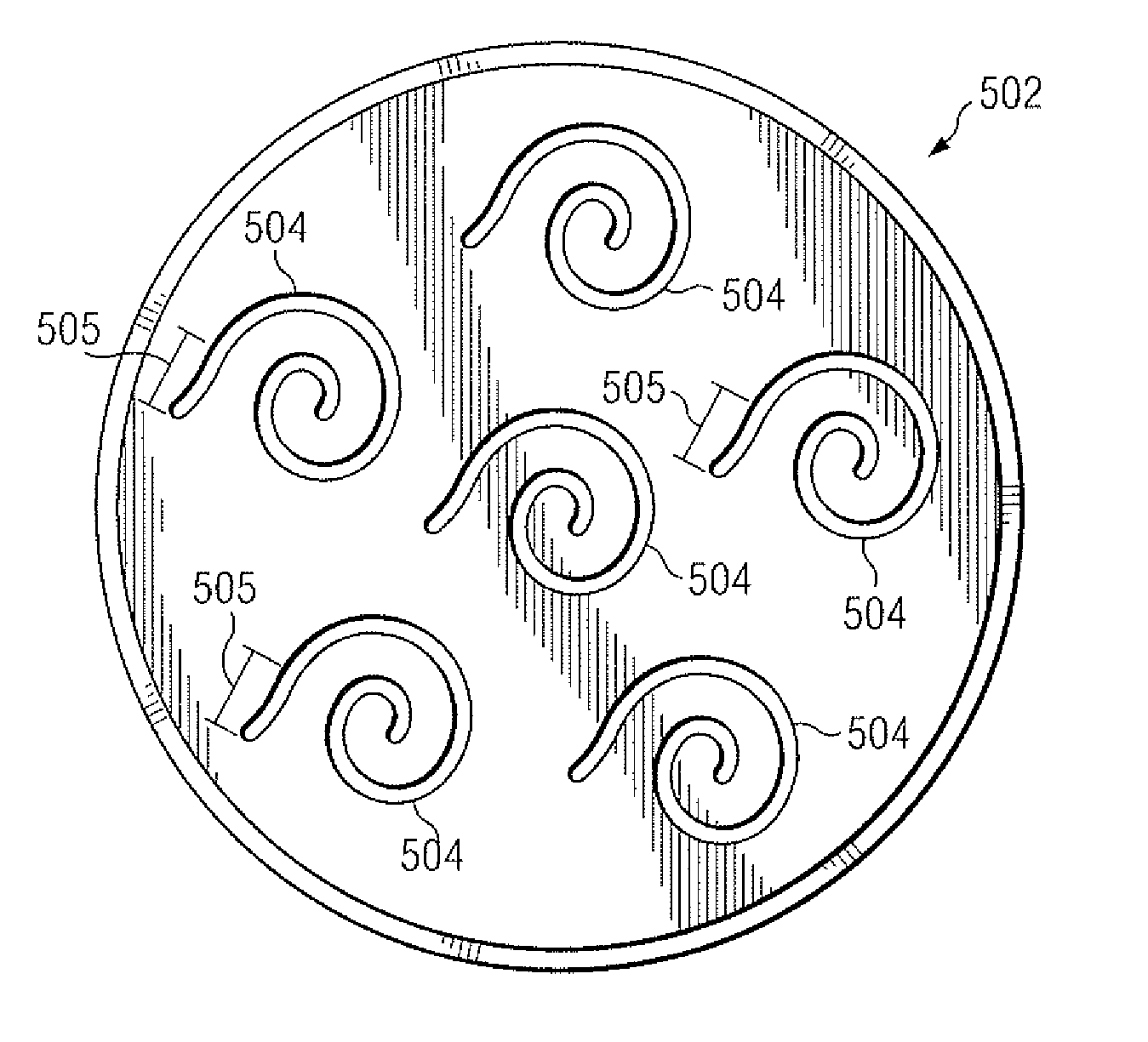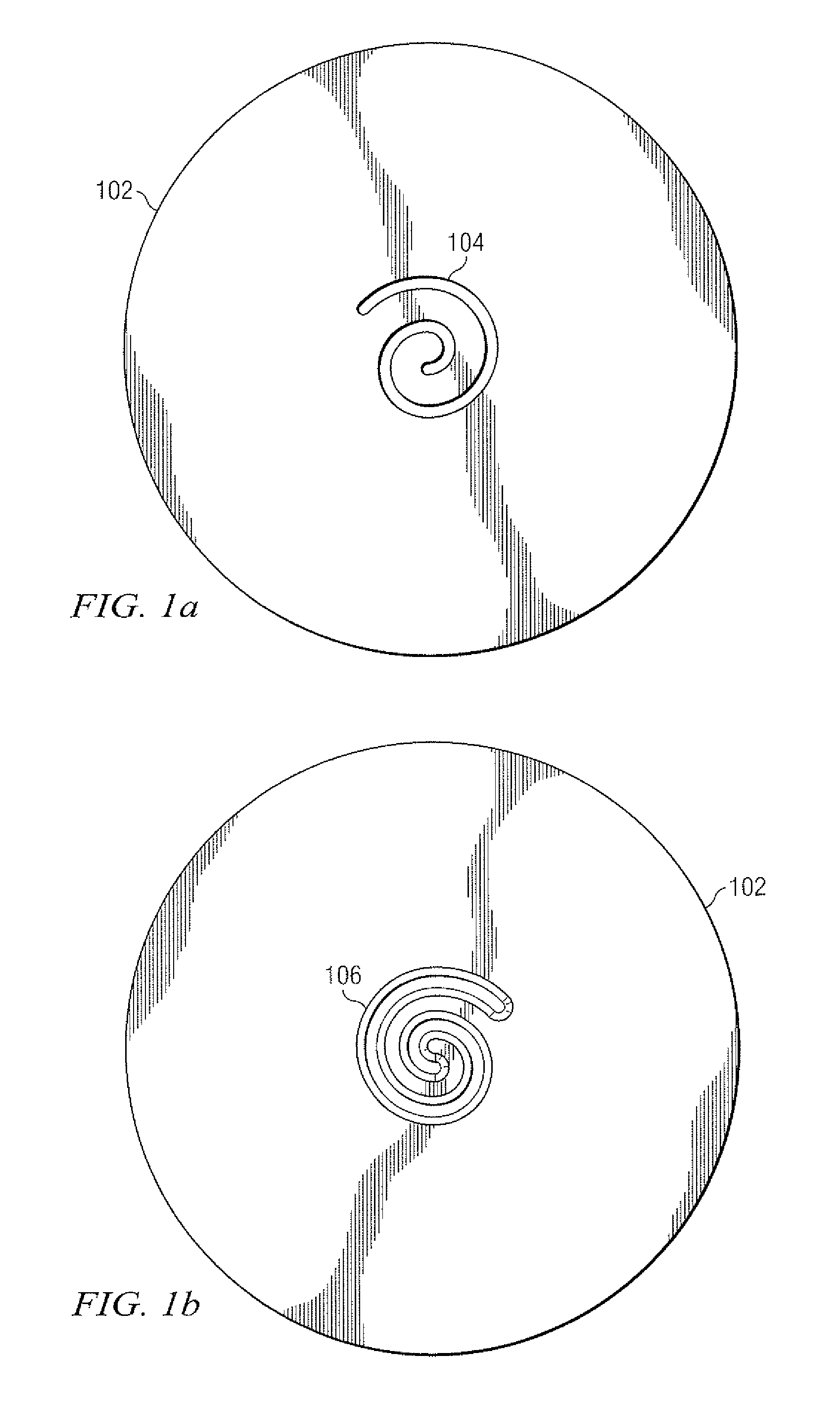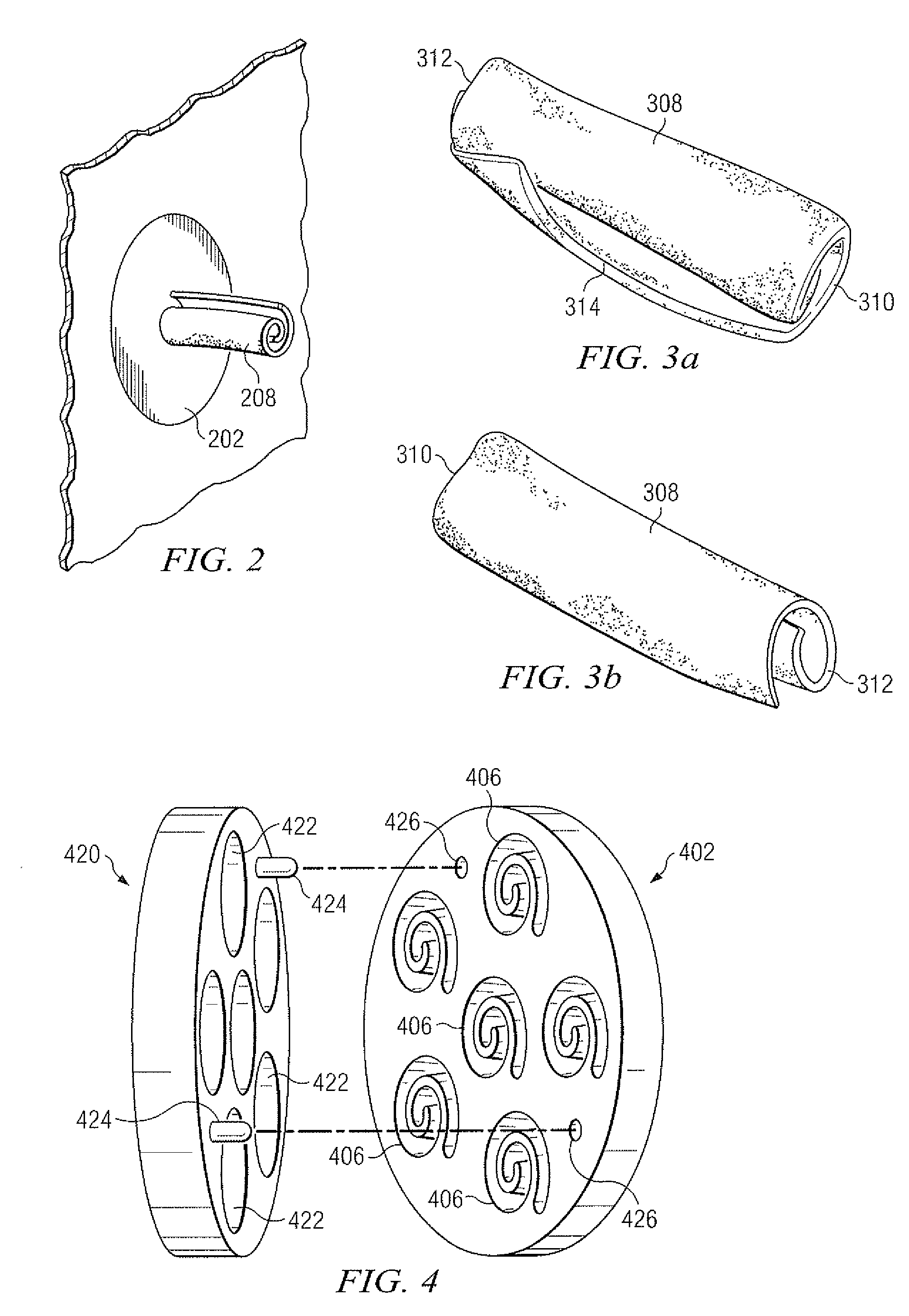Apparatus and method for production of rolled dough food piece
a technology of dough and apparatus, which is applied in the field of apparatus and method for forming tubes of dough, can solve the problems of high rate of snack food industry, inability to meet the requirements of rolling technology, etc., and achieves the effects of high throughput of product, simple process and high efficiency
- Summary
- Abstract
- Description
- Claims
- Application Information
AI Technical Summary
Benefits of technology
Problems solved by technology
Method used
Image
Examples
Embodiment Construction
[0025]Applicants' invention produces a snack food piece that is rolled in appearance, but is not rolled by way of manufacture, at least not by methods used in the prior art. Rather, Applicants use extrusion technology to produce a food piece that gives the appearance of having been rolled from a sheeted process.
[0026]FIGS. 1a and 1b show the front (exit) and the rear (input), respectively, of an extrusion die insert 102 in accordance with one embodiment of Applicants' invention. Referring to FIG. 1a, the die insert 102 is shown in a plan view from the perspective of the exit portion of the Applicants' spiral shaped orifice 104. FIG. 1b, again a plan view, shows the opposite side of the die insert 102, thus revealing the entry opening to the spiral shaped orifice 106. It should be noted that the entry 106 to the orifice is wider than the exit 104 of the orifice. The interior width of the orifice between the entry 106 and exit 104 gradually and linearly reduces from the entry 106 widt...
PUM
| Property | Measurement | Unit |
|---|---|---|
| length | aaaaa | aaaaa |
| length | aaaaa | aaaaa |
| length | aaaaa | aaaaa |
Abstract
Description
Claims
Application Information
 Login to View More
Login to View More - R&D
- Intellectual Property
- Life Sciences
- Materials
- Tech Scout
- Unparalleled Data Quality
- Higher Quality Content
- 60% Fewer Hallucinations
Browse by: Latest US Patents, China's latest patents, Technical Efficacy Thesaurus, Application Domain, Technology Topic, Popular Technical Reports.
© 2025 PatSnap. All rights reserved.Legal|Privacy policy|Modern Slavery Act Transparency Statement|Sitemap|About US| Contact US: help@patsnap.com



